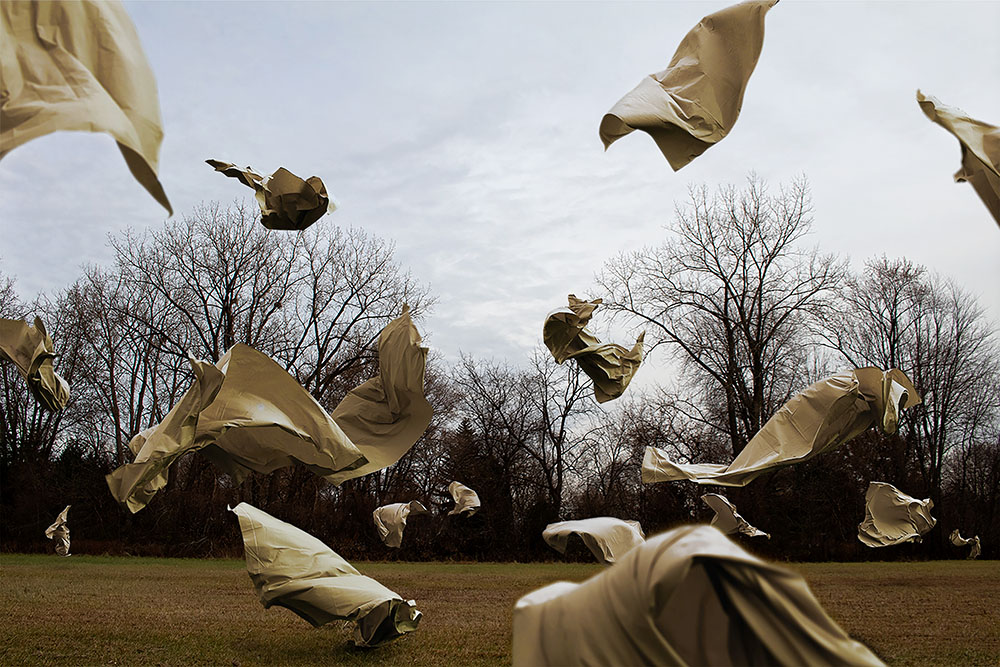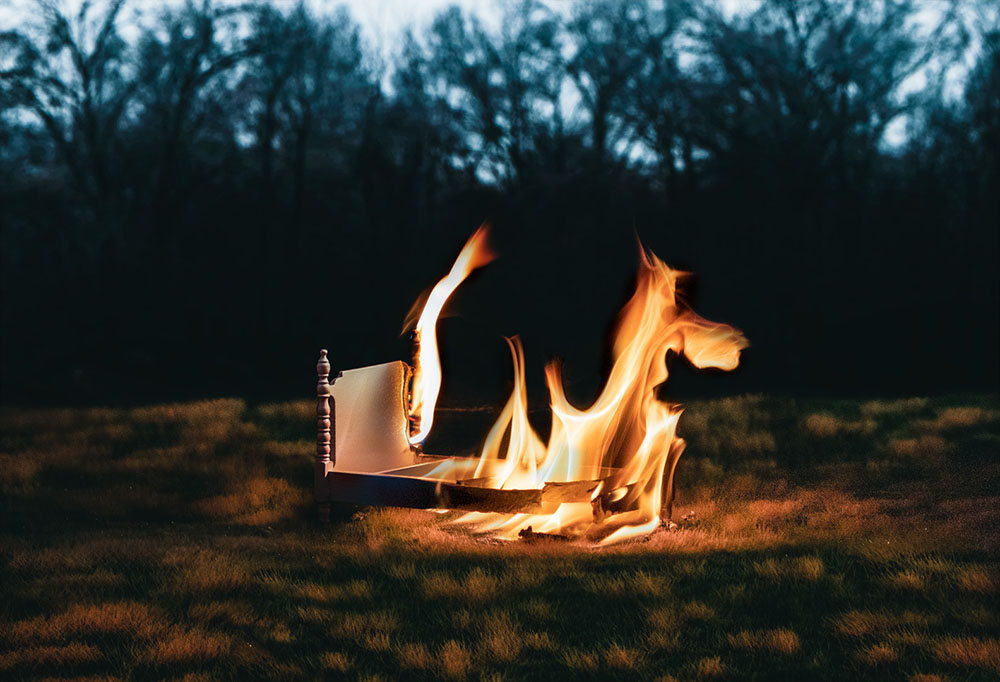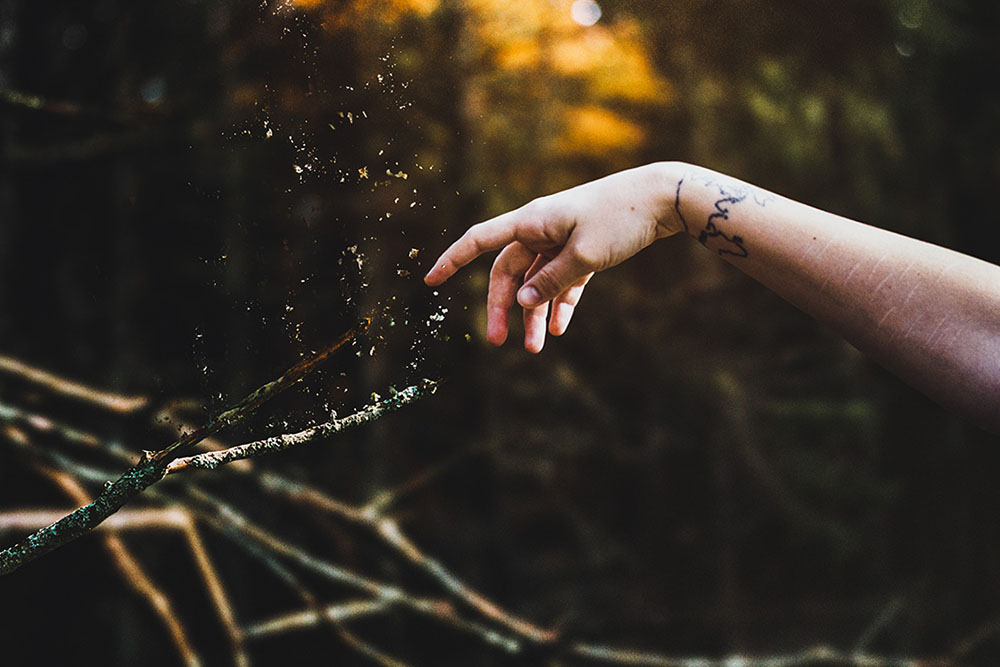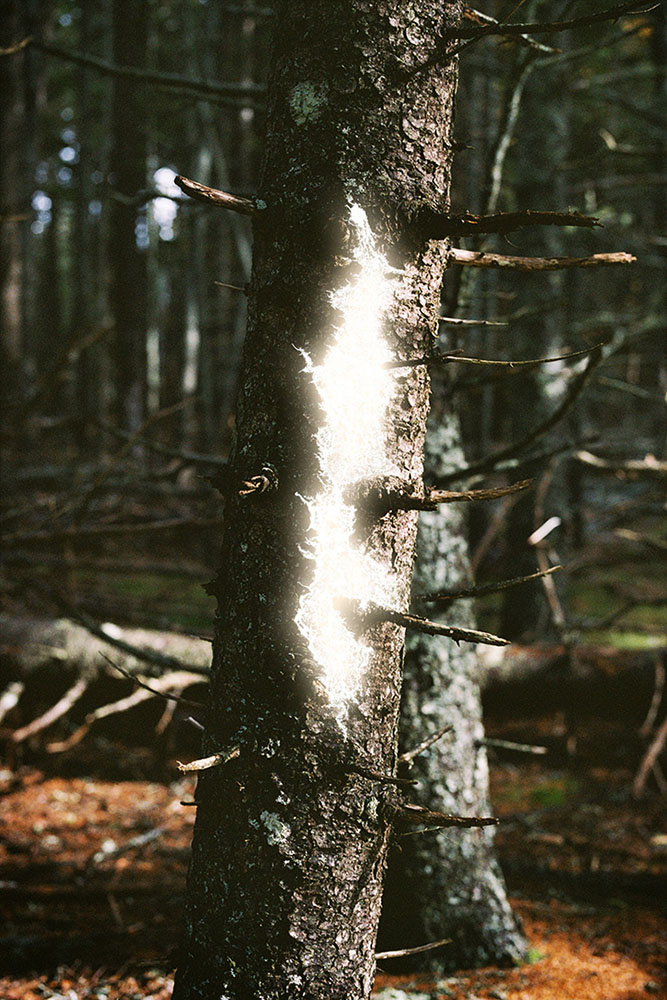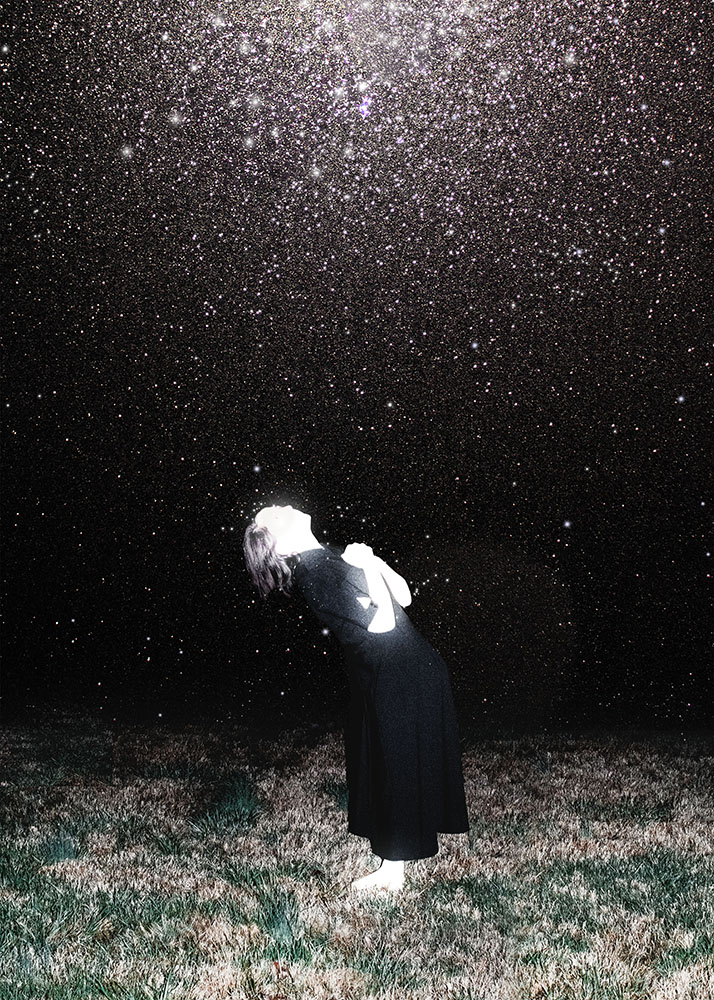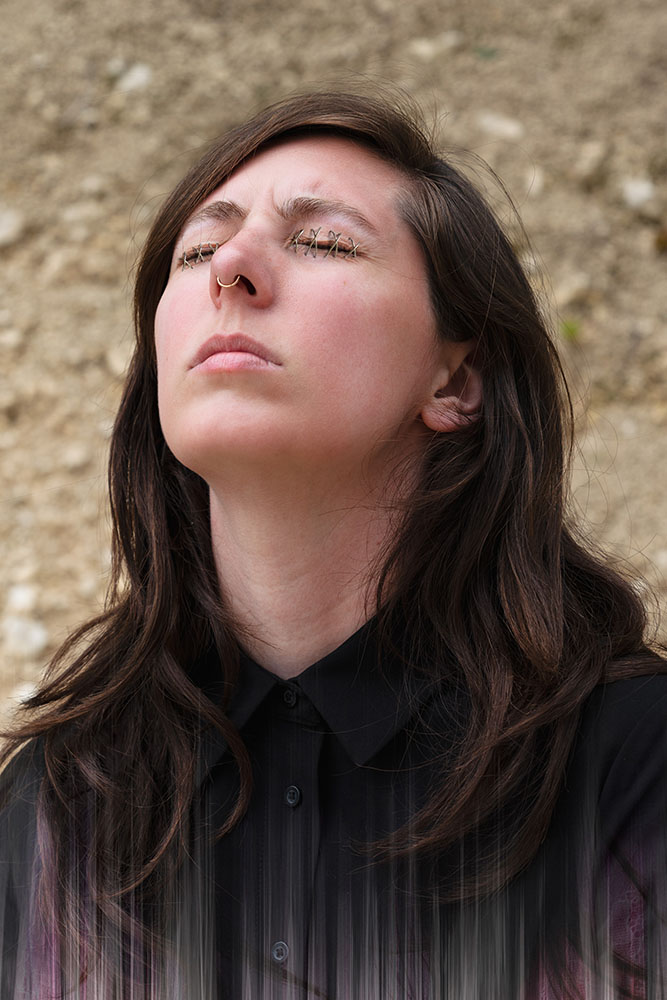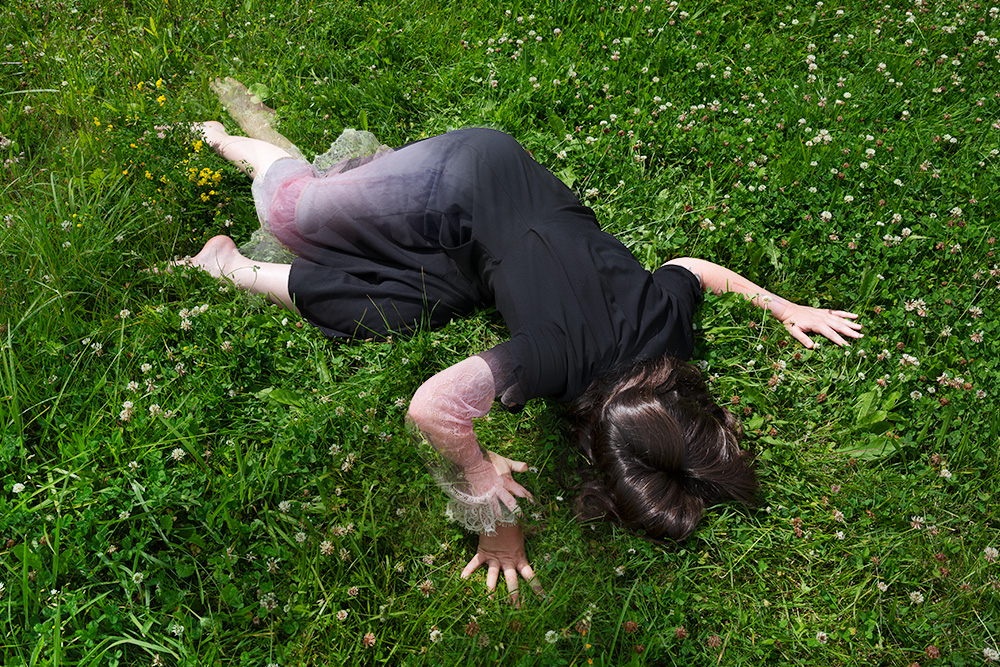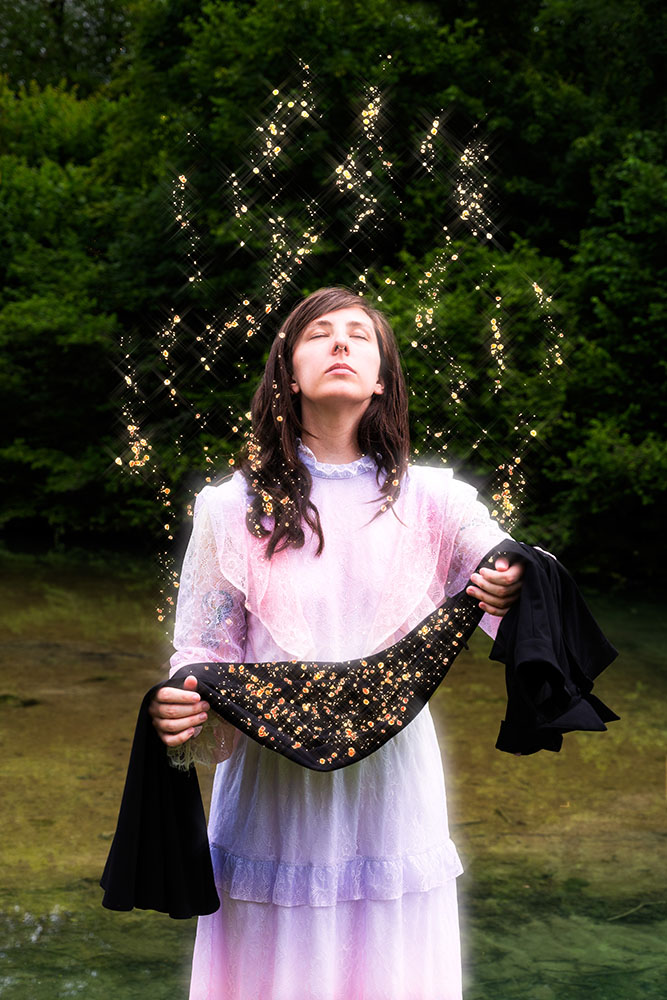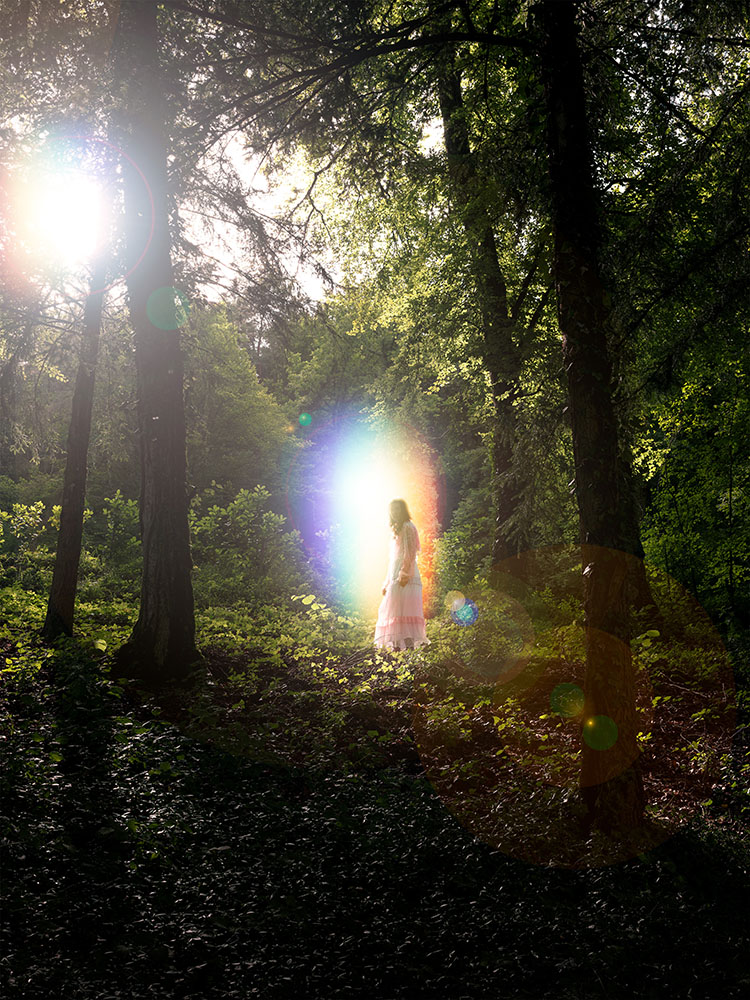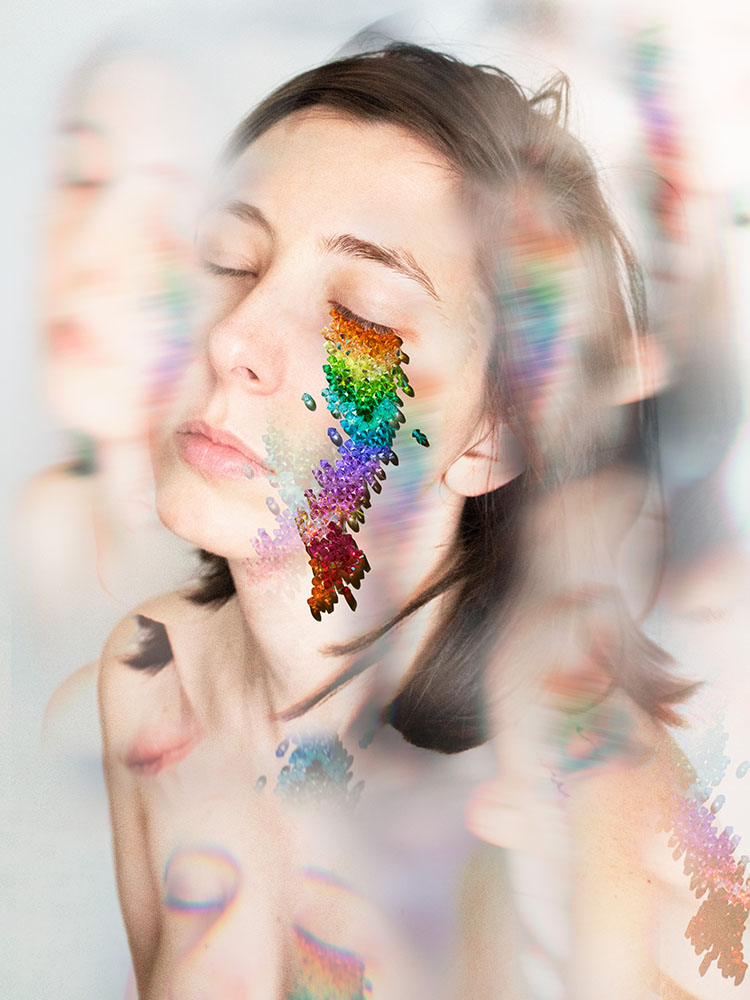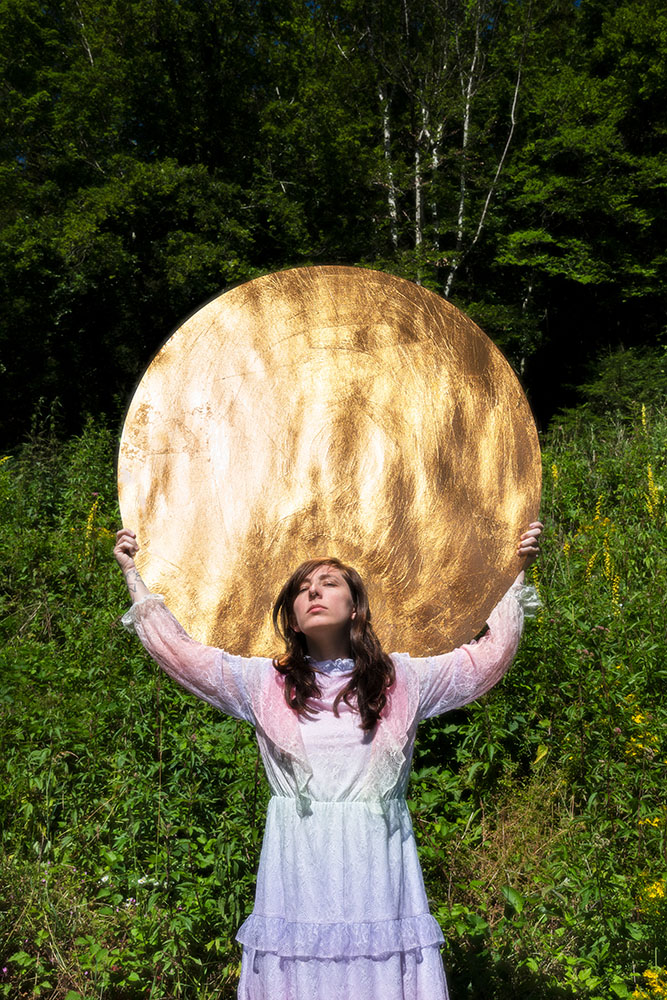Danielle “deo” Owensby: My Divine Comedy
This week, we will be exploring projects inspired by memory, place, and/or intimacy. Today, we’ll be looking at Danielle “deo” Owensby’s series My Divine Comedy.
I came across Danielle “deo” Owensby’s work through a submission to Midwest Nice Art, an art collective I run with my husband, Tim Rickett. I was intrigued by the dream-like qualities of their images. Anyone who has read Dante’s The Divine Comedy has likely questioned what their experiences would be. As a queer artist, these questions take on even more significance, especially for those who grew up or are currently religious. deo is able to bring these considerations to a personal experience, playing with motifs from religion, Renaissance art, and queer culture. These images are both unsettling and comforting, asking more questions than finding answers.
Danielle “deo” Owensby (they/she) is an artist and educator who explores memory, trauma, and healing. She incorporates installation, performance, and collage into her practice, often drawing from personal encounters to create visual dialogues that resonate with viewers on a profound and empathetic level.
Deo has shown their work internationally in venues such as the Knockdown Center in New York, New York; Melbourne Art Center in Melbourne, Australia; University of the Arts in Philadelphia, Pennsylvania; and the Grand Rapids Art Museum in Grand Rapids, Michigan. Her work has been published in various publications, from art publications to blogs and is in private collections around North America and Europe.
Currently, deo is a photography instructor at Washtenaw Community College in Ann Arbor, MI and teaches art and humanities at Schoolcraft College. She is also the editor of The Jade Plant Project, an open and free publication dedicated to sharing the stories of survivors of sexual violence. When they aren’t working, they love to take care of their houseplants and sing passionately (yet out of tune,) in the car.
Follow deo on Instagram at: @ownsbyd
My Divine Comedy
My Divine Comedy, reinterprets Dante Alighieri’s 14th-century epic, The Divine Comedy, through the lens of my personal journey as a queer individual. Inspired by Dante’s vivid depictions of Hell, Purgatory, and Heaven, my work reflects my struggle between my true self and the rigid beliefs of the fundamentalist church in which I was raised.
This series serves as an allegorical exploration of my path to self-acceptance and love, paralleling Dante’s narrative from darkness to light. Through self-portraits and constructed imagery, I blend literal interpretations of Dante’s text with my own imaginative visions, challenging and reimagining his story. Inspired by medieval and Renaissance paintings, Christian stories and aesthetics, as well as the qualities of light, I embark on my own journey of struggle, self-acceptance, and ultimately self-love.
As I continue to develop this series, which is an epic in its own right, I reflect on questions that have haunted me: What would my journey through the afterlife look like? How would my so-called sins be punished, especially as a queer person who has rejected purity culture? More importantly, how can I dismantle these internalized punishments and celebrate my authentic self?
Epiphany Knedler: How did your project come about?
Danielle “deo” Owensby: This project took root in the fall of 2011 when I was reading Dante Alighieri’s Inferno in a college English class. I was taken by Dante’s vivid descriptions of hell and the punishments enacted on its inhabitants, and I wanted to create a photo series illustrating his tale. I wasn’t sure how to execute the project and knew my skills weren’t quite ready for the task, so I set the idea aside for later.
Fast forward to 2019, when I began using my camera to explore my Fundamentalist, Christian upbringing and how it clashed with my queer identity. I hadn’t stopped thinking about Dante’s Inferno, and decided instead of a series illustrating his tale, I would instead use it as a framework to investigate my religious trauma. I took the first picture, Lust, in 2019.
However, as I continued to create photos for the project, my attitude shifted. Making work about the tension and pain I had gone through was important to me, but my experiences growing into myself and accepting my identity were far more complex. I knew that Inferno was just one part of the larger, epic poem, The Divine Comedy, and that Dante not only wrote about his fictional avatar’s journey through hell, but through purgatory and heaven as well.
Curious about the rest of the poem, I read Purgatorio and Paradiso and discovered a tale about fighting for redemption, the complexities of being human, and the joy of being loved. With those themes in mind, I decided to re-work my project further to craft a tale about the fight for self-acceptance, the non-linear journey accompanying that fight, and the inherent power of love.
EK: What relationship does identity play within your practice?
DO: Identity is at the core of everything I create. I use photography and art as a tool to navigate and understand my experiences, such as childhood trauma, mental illness, and religious struggles. These elements are integral to my sense of self, and through my projects, I aim to examine and reflect on how they shape my identity. This process not only aids in my personal clarity and healing but also allows me to connect with others who have faced similar challenges, creating a shared space for empathy and understanding.
In my series “My Divine Comedy,” identity plays a central role as I reinterpret Dante’s classic journey through a personal lens. This project explores my path from the darkness of internalized shame and rigid religious beliefs to the light of self-acceptance and love. Each section—”Inferno,” “Purgatorio,” and “Paradiso”—represents different stages of my journey toward embracing my queer identity and healing from past traumas.
EK: Is there a specific image that is your favorite or particularly meaningful to this series?
DO: Yes! The image The Self-Violent Freed changed the overall tone of the series. The image is inspired by the seventh circle of hell, where those who committed acts of violence reside– including those who committed suicide, who were doomed for all eternity to suffer as bleeding, screaming trees being attacked by harpies. I had hated that punishment since I read it in 2011, and decided in my series that those eternal souls wouldn’t suffer anymore– I would set them free. This was the first time I deviated from Dante’s narrative and I have continued to play by my own rules ever since.
EK: Can you tell us about your artistic practice?
DO: My artistic practice is a continuous journey of self-discovery and emotional exploration. While it may seem simple, my work is deeply rooted in the need to understand and articulate the complexities of my feelings and experiences. I often feel things intensely, and through my art, I seek to unravel these emotions, understand how they shape my identity, and connect with others who have shared similar journeys.
In my practice, I view art as a tool for dissection and reflection. My projects frequently begin with a deeply personal exploration, as I aim to peel back the layers of my experiences, exposing the raw and often painful truths that lie beneath. This process is not just about personal catharsis, it is also a way to forge connections with others. By sharing my vulnerabilities, I hope to create a space where others can see themselves reflected and feel less alone in their struggles.
As my projects evolve, they often take on a communal dimension. The insights and healing I gain from my personal explorations become a foundation for community-based work. I engage with others, using my art to foster dialogue, empathy, and understanding. Whether through collaborative projects, workshops, or exhibitions, I strive to use my creative practice to contribute to a broader conversation about shared human experiences, particularly those related to trauma, identity, and resilience.
Ultimately, my work aims to bridge the gap between the personal and the communal. I want to turn inward reflections and discoveries into something that can be used in actions of solidarity and support. My goal for my art is to help myself and others navigate the complexities of being human, find meaning in our struggles, and foster community through shared narratives.
EK: What’s next for you?
DO: A few things! I’m working on a few major, long-term projects, including My Divine Comedy.
I will continue to work on My Divine Comedy, as there are many more images I want to create, and I openly refer to the series as my own epic poem. Dante’s work features a variety of landscapes and locations as if he wanted the poem to take place in the entire world, so I am planning and scheming places to travel to for more images like Iceland, New Mexico, and Colorado, to name a few!
I’m also honored to be a part of the 2024 Womxnhouse Detroit Residency by Norwest Gallery. The residency supports Women and Non-Binary artists as part of the initiative to build Detroit neighborhoods. I get to work alongside an incredible cohort of talented artists as we collaborate on an installation in a home in Detroit this September, working together on themes involving womanhood and the experiences of being non-binary.
I’ll be creating a bedroom installation investigating the tension of being queer and non-binary in a religious environment, and how the bedroom is a site where prayer, self-loathing, self-love, and sexual exploration collide. The incredible artists in my cohort are Michaela Ayers, Kashira Dowridge, Takeisha Jefferson, Lauren Jones, Elise Marie Martin, Gyona Rice, Megan Rizzo, Brittany Rogers, and Cat Washington.
Epiphany Knedler is an interdisciplinary artist + educator exploring the ways we engage with history. She graduated from the University of South Dakota with a BFA in Studio Art and a BA in Political Science and completed her MFA in Studio Art at East Carolina University. She is based in Aberdeen, South Dakota, serving as a Lecturer of Art and the co-curator for the art collective Midwest Nice Art. Her work has been exhibited in the New York Times, Vermont Center for Photography, Lenscratch, Dek Unu Arts, and awarded through the Lucie Foundation, F-Stop Magazine, and Photolucida Critical Mass.
Follow Epiphany on Instagram: @epiphanysk
Posts on Lenscratch may not be reproduced without the permission of the Lenscratch staff and the photographer.
Recommended
-
Salua Ares: Absense as FormNovember 29th, 2025
-
Ricardo Miguel Hernández: When the memory turns to dust and Beyond PainNovember 28th, 2025
-
Pamela Landau Connolly: Columbus DriveNovember 26th, 2025
-
KELIY ANDERSON-STALEY: Wilderness No longer at the Edge of ThingsNovember 19th, 2025
-
Jackie Mulder: Thought TrailsNovember 18th, 2025


